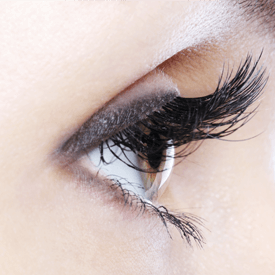

ABOUT CME
Cystoid macular edema (CME) is caused by the buildup of fluid in cyst-like formations found around the center of the retina. Once a patient has experienced CME in one eye, their likelihood of suffering from CME in the other eye increases to 50%. CME commonly causes inflammation of the eye, and though it typically does not create a great amount of discomfort, it can be accompanied by a number of more serious eye conditions. In most situations, CME is caused by uveitis or retinal vein occlusion, or chronic diseases like diabetes, or occurs as a result of cataract surgery. The condition can result in poor vision which can affect a patient’s quality of life. Ocala, FL board-certified retina surgeon, Dr. Shalesh Kaushal, warns that if patients are suffering from blurred vision with or without discomfort, they should seek attention at Comprehensive Retina Consultants at their earliest convenience. Due to the lack of pain associated with CME, patients often do not realize the extent of their condition.
CYSTOID MACULAR EDEMA CAUSES AND SYMPTOMS
While the specific cause of CME is unknown at this time, we do know that it is linked to underlying health conditions such as an epiretinal membrane, uveitis, vein occlusion, and diabetes. CME can also be caused by cataract surgery. Regardless of the cause, the symptoms of the condition are consistent with cysts of fluid appearing around the macula, or the center portion of the retina, accompanied by decreased central vision and blurred/distorted vision which inhibits the ability to observe detail and fine print.
CYSTOID MACULAR EDEMA DIAGNOSIS
CME can be diagnosed during a thorough examination at Comprehensive Retina Consultants. During this eye exam, Dr. Kaushal will likely perform a fluorescein angiography, which injects a special fluorescent dye into your bloodstream to observe the blood vessels in the back of the eye, where CME can be observed. Dr. Kaushal may also elect to take photos of your retina using optical coherence tomography, or OCT. These photos are commonly used to monitor and assess CME, and its response to treatment.
CYSTOID MACULAR EDEMA TREATMENT AND PROGNOSIS
A patient’s CME treatment will be personalized based on the extent of their conditions, and the severity of their symptoms. Beginning with addressing the underlying cause of CME, Dr. Kaushal will determine how best to treat both CME and the symptoms associated with the condition. Inflammation of the eye is most commonly treated with corticosteroids and anti-inflammatory medications in the form of injections, pills, or eye drops. Other treatment options include laser therapy and the injection of a VEGF-inhibitor, commonly used to prevent new growth of abnormal blood vessels. Should surgical treatment be warranted, vitrectomy can be used to remove the vitreous gel in the eye to decrease strain on the retina.
While each patient’s results and prognosis are entirely unique, CME can often be treated with great success, often restoring and even improving the vision of the patient.
TREAT CME
If you suspect that you may be suffering from CME, or would like more information on the condition, we invite you to contact Comprehensive Retina Consultants at your earliest convenience. Our skilled staff and highly advanced technology assist us in the diagnosis and treatment of CME with optimum results and successful outcomes. Deteriorating vision should not be something you live with. Call us today to schedule your consultation and restore your vision.


